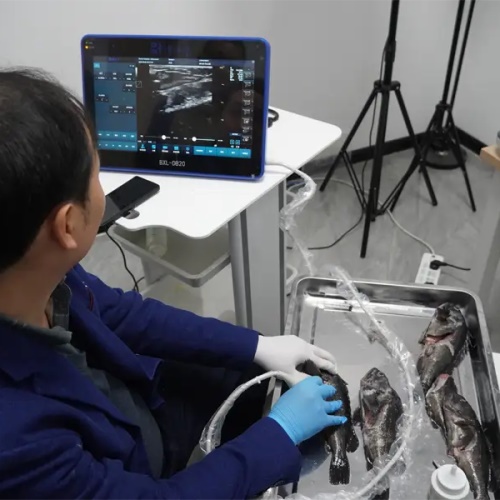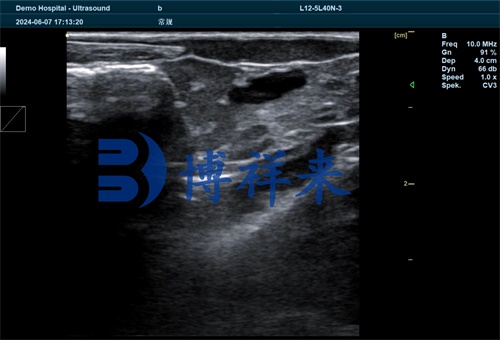As a livestock and animal farm operator, I’ve seen firsthand how veterinary technology continues to advance and shape the future of animal health. One of the most promising innovations in recent years is the use of intravascular ultrasound (IVUS) in veterinary medicine. Though more commonly associated with human cardiovascular diagnostics, this technology is quickly being adopted in small animal practices for precise vascular assessment. Its capability to visualize vessel walls, internal structures, and pathological changes offers valuable information beyond traditional imaging.

This article explores the practical application of IVUS in small animal practice, discusses its advantages over conventional angiography, and examines future prospects in veterinary cardiovascular care. The perspective is grounded in real-world usage on animal farms and small clinics, keeping the language clear and relevant to practitioners and animal health decision-makers.
Understanding Intravascular Ultrasound (IVUS)
IVUS is an advanced imaging modality that involves inserting a miniature ultrasound probe into a blood vessel via a catheter. Unlike traditional ultrasonography that scans from the outside of the body, IVUS operates from within the vessel, capturing cross-sectional images of the vascular lumen and wall. This offers unprecedented detail of internal vascular structures and helps identify early-stage disease that might be invisible on standard imaging.
The basic components include:
-
Ultrasound catheter with transducer
-
Guide wire and sheath system
-
Imaging console for real-time display
Once inserted, the transducer emits high-frequency sound waves (often 20–60 MHz) and receives the returning echoes. These echoes vary in intensity based on tissue density, enabling the system to reconstruct an accurate map of the vessel wall, including plaques and lumen size.
IVUS vs. Traditional Angiography
Conventional angiography requires injecting contrast agents to visualize blood vessels under X-ray. While it effectively shows the shape and diameter of the vessel lumen, it does not reveal the internal composition of the vessel wall or detailed morphology.
In contrast, IVUS provides:
-
High-resolution imaging of the vessel wall, plaque type, and tissue composition
-
Detection of structural abnormalities とか fibrosis, calcification, そして lipid pools
-
More accurate assessment of stenosis severity and plaque vulnerability
This makes IVUS a vital complementary tool to angiography, especially in complex cases where surface imaging is insufficient for diagnosis or treatment planning.
Clinical Applications in Small Animal Practice
Although IVUS was initially used in human cardiology, it’s finding increasing use in veterinary clinics—particularly in canine and feline cardiovascular assessment. Its ability to clearly delineate the structure of arteries, veins, and lesions is opening up new possibilities in diagnosing and managing heart and vascular diseases in pets.
Some key applications include:
-
Diagnosis of Coronary Artery Disease (CADの)
IVUS can detect early atherosclerotic changes even before symptoms appear. This is especially useful in certain dog breeds genetically predisposed to heart issues. -
Guiding Interventional Procedures
IVUS can guide angioplasty, stent placement, 又は balloon dilation, allowing veterinarians to monitor treatment success in real time. -
Monitoring Endothelial Function
The endothelium’s health is a critical marker of vascular condition. IVUS helps assess this by measuring wall thickness and lumen irregularities. -
Plaque Ablation and Evaluation
In experimental and clinical settings, IVUS supports ultrasound-assisted plaque ablation, allowing for targeted treatment of obstructive lesions without invasive surgery.
Advantages of IVUS in Veterinary Settings
For veterinarians and farm operators alike, the integration of IVUS brings several unique benefits:
-
Non-destructive exploration of vascular interiors
-
Real-time imaging enables immediate decision-making
-
Enhanced diagnostic precision, reducing misdiagnosis risk
-
Increased safety by minimizing reliance on contrast agents and radiation
Moreover, in research or breeding programs, early cardiovascular disease detection through IVUS can significantly improve long-term outcomes for animals.

Challenges and Limitations
Despite its promise, IVUS also faces certain barriers in veterinary applications:
-
Cost and availability: The systems are still expensive and not widely available in routine clinics.
-
Training requirement: Operators need specialized skills to interpret the data accurately.
-
Miniaturization: The current size of probes can be challenging for very small animals like cats or toy breeds.
しかし, these are rapidly being addressed. Ongoing innovations are making catheters smaller, imaging faster, and integration with other diagnostic systems smoother, ensuring broader accessibility in the near future.
Future Developments in Veterinary IVUS
The next evolution in IVUS is expected to bring real-time 3D intravascular imaging, allowing for spatial visualization of lesions and vascular geometry. かつ, combining IVUS with other imaging techniques—such as optical coherence tomography (OCT) 又は angiographic fusion—may provide a multi-dimensional diagnostic toolkit.
Further developments could include:
-
Fully integrated interventional platforms with IVUS probes and treatment devices
-
Miniature systems for exotic pets and neonatal animals
-
AI-based interpretation software to support real-time diagnosis and data analysis
For large-scale animal farms, portable IVUS devices could soon assist in on-site cardiovascular monitoring, particularly for breeding animals or those with high economic and genetic value.
結論
Intravascular ultrasound is no longer just a niche technology—it’s becoming a cornerstone in the evolution of advanced veterinary cardiovascular care. For small animal clinics, farm animal specialists, and veterinary researchers, IVUS opens a new window into diagnosing and treating vascular diseases with greater clarity, safety, and precision.
As an operator with hands-on experience, I see IVUS not just as a technological upgrade, but as a game-changer in animal welfare and practice efficiency. With continued development and wider adoption, it has the potential to revolutionize how we approach veterinary diagnostics from the inside out.